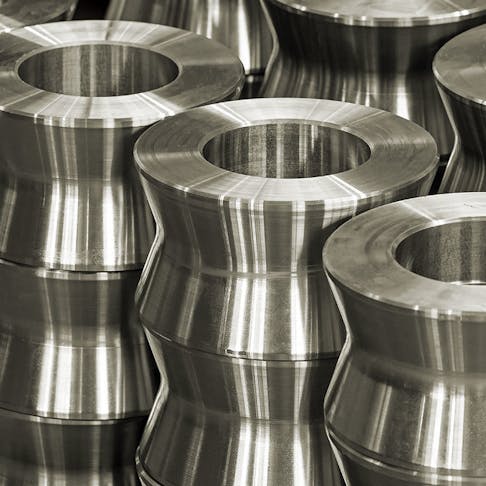
Which Manufacturing Process is Right for Your Industry?
Our team has consolidated key takeaways after years of working with Fortune 500 companies across various industries.

Every industry has different manufacturing needs, and there are many options when it comes to selecting the right method to create your custom parts. We’ve worked with thousands of customers across industries, and consolidated key observations to help you choose the right process for your next project.
Aerospace
Engineers and product designers within the aerospace industry overwhelmingly utilize CNC machining for their custom parts due to the high precision and range of qualified materials and finish options. Xometry works with 90% of Top 10 Fortune 500 aerospace companies, and we’ve seen them do lots of machined work because they can design tight tolerances on metals like aluminum, steel, and titanium. For the jobs that aren’t machined or fabricated using sheet metal, fused deposition modeling (FDM), and selective laser sintering (SLS)are common choices because they allow for complexity and scalability at a lower cost.
Medical Devices
Xometry works with 86% of the Fortune 500 medical device companies, and the most popular process among engineers and product designers in the industry is direct metal laser sintering (DMLS). Metal 3D Printing with DMLS offers strength, precision, and complex geometry for a fraction of the cost of traditional machining. For non-metal parts and prototypes, SLS 3D Printing is also a popular option. When high-precision and custom materials are the primary concern, CNC machining is still the required manufacturing method for some medical device jobs.
Technology and Consumer
While technology industry parts can be manufactured with a wide range of processes, they’ll likely fare best with FDM manufacturing. FDM offers greater strength, material selection, and larger volume capability. Finer detailed models for rapid prototyping are well suited for photopolymers such as PolyJet rigid and rubber-like materials, including options to build multi-material demonstration pieces. For more cosmetic and end-consumer product runs, the industry will often move to urethane casting to hit the surface finish, performance, and color requirements that wow their market. Urethane cast parts are often a precursor to higher volume manufacturing, such as molding.
Automotive
CNC machining is the go-to manufacturing choice for engineers in the automotive industry. When designing custom auto parts, it is important to have numerous materials to choose from, along with a variety of custom finish options. On the factory floor, automotive production engineers are taking advantage of the large build size of FDM to build purpose-built assembly jigs and fixtures up to three feet in length!
Key Takeaways
When it comes to selecting a manufacturing process, different technologies and methods stand out for each industry. Within each category there is still flexibility depending on the level of precision required, balanced with cost considerations. For subtractive or additive parts, from prototypes to production runs, Xometry has the right solution with instant pricing, lead times, and manufacturing feedback.
